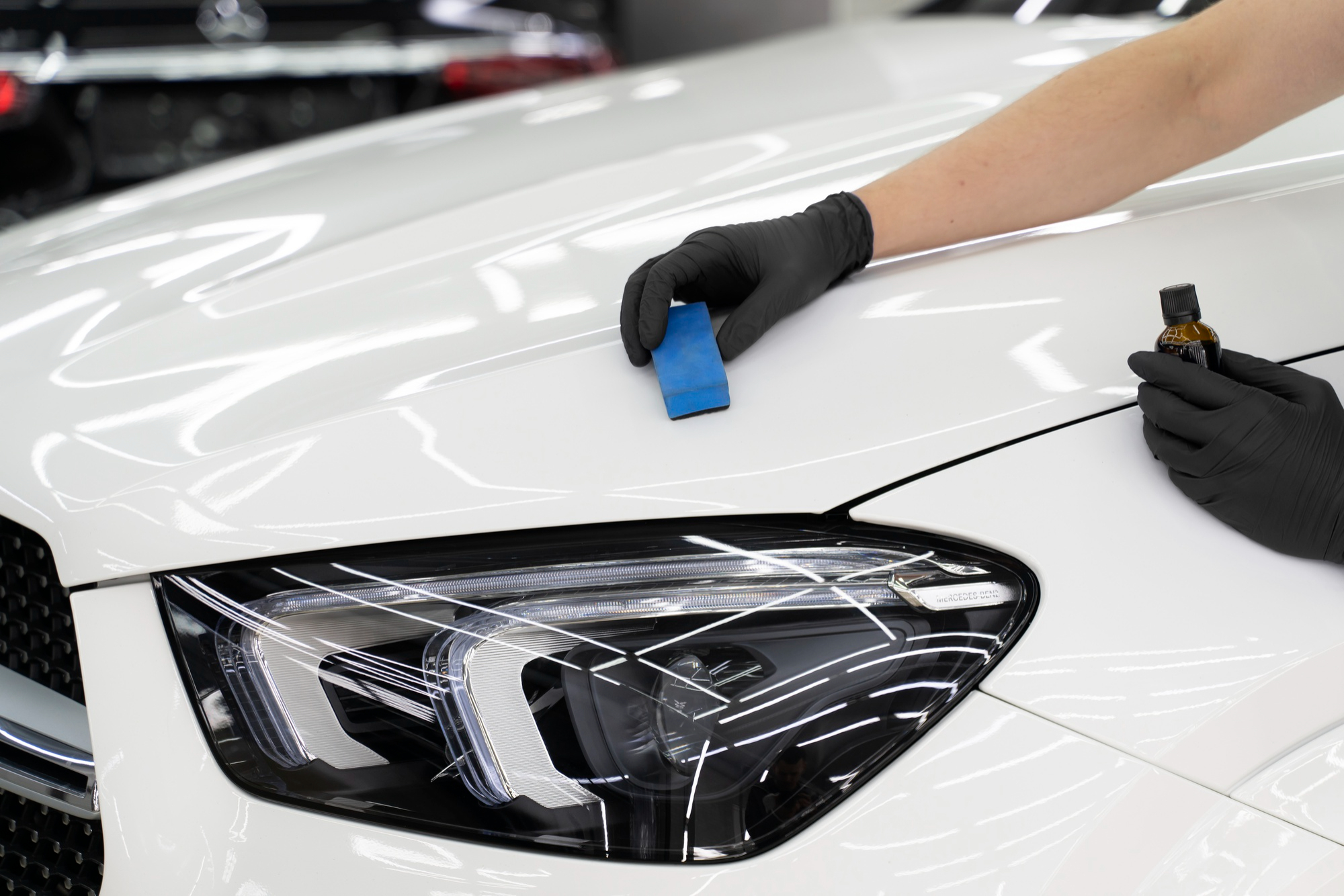Obtain the very best Ceramic Coatings San Jose for Maximum Paint Protection
Obtain the very best Ceramic Coatings San Jose for Maximum Paint Protection
Blog Article
Unveiling the Scientific Research Behind Ceramic Coatings: Exactly How Does It Work and Why Is It Superior to Traditional Options?
Ceramic finishings have actually been getting appeal in various industries for their extraordinary performance and resilience. Understanding exactly how ceramic finishings work and why they outperform traditional options is crucial for those looking for to improve the long life and resilience of their materials.
The Chemistry of Ceramic Coatings
In recognizing ceramic finishes, delving right into the detailed chemistry behind their make-up is necessary for comprehending their capability and sturdiness. Ceramic finishes are mostly made up of silicon dioxide (SiO2), which forms a safety and strong layer when related to numerous surfaces. This chemical framework gives extraordinary resistance to heat, chemicals, and deterioration, making ceramic finishes very searched for for a variety of applications.
The chemistry behind ceramic finishes involves the development of covalent bonds in between silicon and oxygen atoms, creating an inflexible network that improves the finishing's toughness and longevity. Additionally, the visibility of other components such as titanium, light weight aluminum, and zirconium additional enhances the finish's properties, using boosted firmness and bond to surface areas.
Understanding the chemical structure of ceramic finishings enables the personalization of formulations to fit certain demands, whether it be for automotive, commercial, or residential functions. By using the power of chemistry, ceramic coatings proceed to pave the means for superior protection and performance in various industries.
Benefits of Ceramic Coatings

As an outcome, ceramic layers make cleaning and maintaining surfaces much simpler and less time-consuming. Generally, the plethora of advantages offered by ceramic coatings make them a premium alternative compared to standard finishing approaches.
Exactly How Ceramic Coatings Bond
Ceramic layers bond to surfaces via a process that includes molecular adhesion and chemical interactions. When a ceramic layer is related to a surface area, it forms a strong bond by chemically adhering to the surface area at a molecular level. This bond is produced with the formation of covalent bonds, which are extremely solid and resilient. The ceramic covering's molecules penetrate the pores of the surface, creating a tight grasp that stands up to splitting up.
In addition, the chemical interactions between the ceramic covering and the surface further improve the bond. ceramic coatings san jose. These communications permit the ceramic finish to develop a seamless and constant layer on the surface area, giving superb security and resilience. Unlike conventional finishes that may rest on the surface area without fully bonding, ceramic layers create a permanent bond that is resistant to chemicals, UV rays, and severe ecological problems

Essentially, the bonding mechanism of ceramic finishes makes certain a resilient and reliable safety layer that outmatches traditional finish choices. This exceptional bond contributes to the longevity, scrape resistance, and longevity of ceramic coverings, making them a favored option for various applications.
Resilience of Ceramic Coatings
The phenomenal longevity of ceramic coatings comes from their durable molecular bond and chemical interactions with surface areas, ensuring a durable protective layer that exceeds traditional covering alternatives. Once used, ceramic finishes develop a strong bond with the substrate, producing a resilient barrier against numerous ecological stressors such as UV radiation, chemicals, and abrasions. This bond is so protected that it can endure the rigors of day-to-day use without weakening or breaking down rapidly.
Unlike traditional finishings that might weaken over time, ceramic layers maintain their stability for an extended duration, supplying resilient security for the underlying surface. Overall, the outstanding resilience of ceramic finishes makes them an exceptional selection for protecting a broad array of surface areas in various applications.
Ceramic Coatings Vs. Standard Alternatives
In comparison to conventional finishing approaches, ceramic finishes use a distinct blend of longevity and protective capacities that set them apart in numerous surface security applications. Standard alternatives such as wax or sealants offer a temporary layer of defense that can wear off quickly, needing check over here constant reapplication. advice On the various other hand, ceramic finishes form a solid bond with the surface area, developing a semi-permanent or permanent obstacle that is very resistant to abrasion, chemicals, UV rays, and severe temperature levels.
Moreover, ceramic coatings offer superior hydrophobic residential properties compared to typical finishings. The hydrophobic nature of ceramic finishes triggers water to bead up and roll off the surface, carrying dirt and contaminants with it. This self-cleaning result aids to maintain the surface's tidiness and gloss for prolonged durations, lowering the demand for frequent maintenance.
Furthermore, ceramic finishings have a thicker layer contrasted to standard choices, offering improved scratch resistance and defense versus small impacts. This resilience makes sure resilient performance and assists preserve the visual charm of the treated surface for an extensive period.
Conclusion
Finally, the science behind ceramic coverings hinges on their chemical composition and bonding residential or commercial properties, making them above typical alternatives. The benefits of ceramic finishings include raised durability and defense for surface areas. By understanding exactly how ceramic finishings work and their benefits over conventional choices, one can make informed choices when thinking about finish alternatives visit site for different applications.
Unlike standard coverings that may rest on the surface area without totally bonding, ceramic coatings create a permanent bond that is resistant to chemicals, UV rays, and rough ecological problems.
The exceptional long life of ceramic coatings stems from their durable molecular adhesion and chemical communications with surface areas, ensuring a long lasting protective layer that goes beyond traditional finishing choices.Unlike traditional finishings that might break down over time, ceramic finishes keep their integrity for an extensive period, offering durable security for the underlying surface area.In comparison to conventional coating approaches, ceramic layers offer a distinctive blend of resilience and safety capacities that set them apart in numerous surface defense applications. By understanding just how ceramic layers work and their benefits over standard options, one can make enlightened choices when taking into consideration layer options for numerous applications.
Report this page